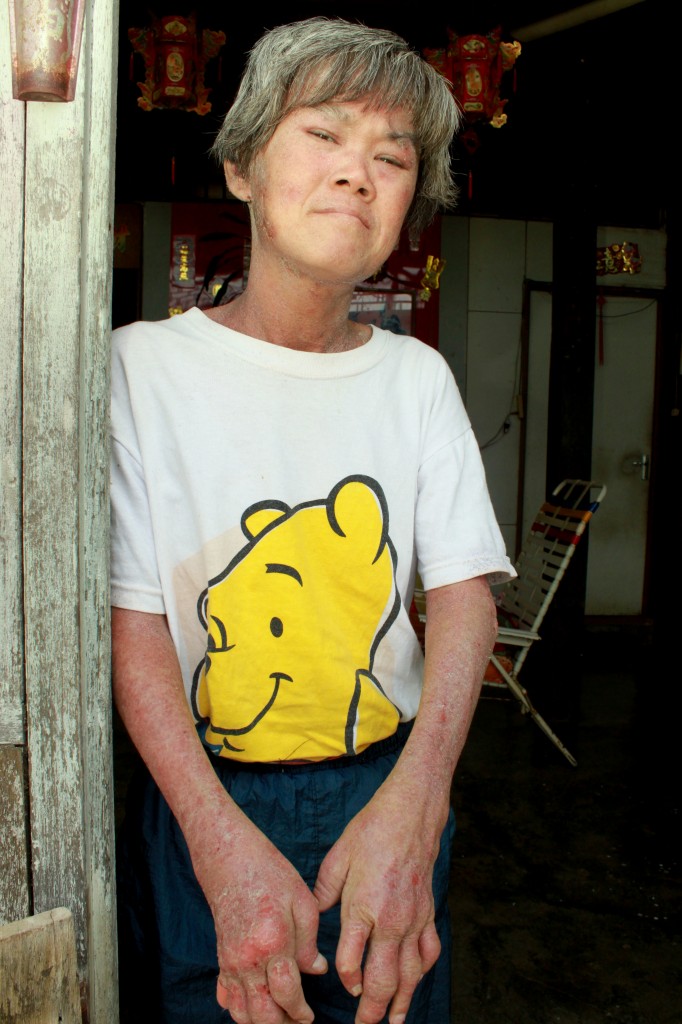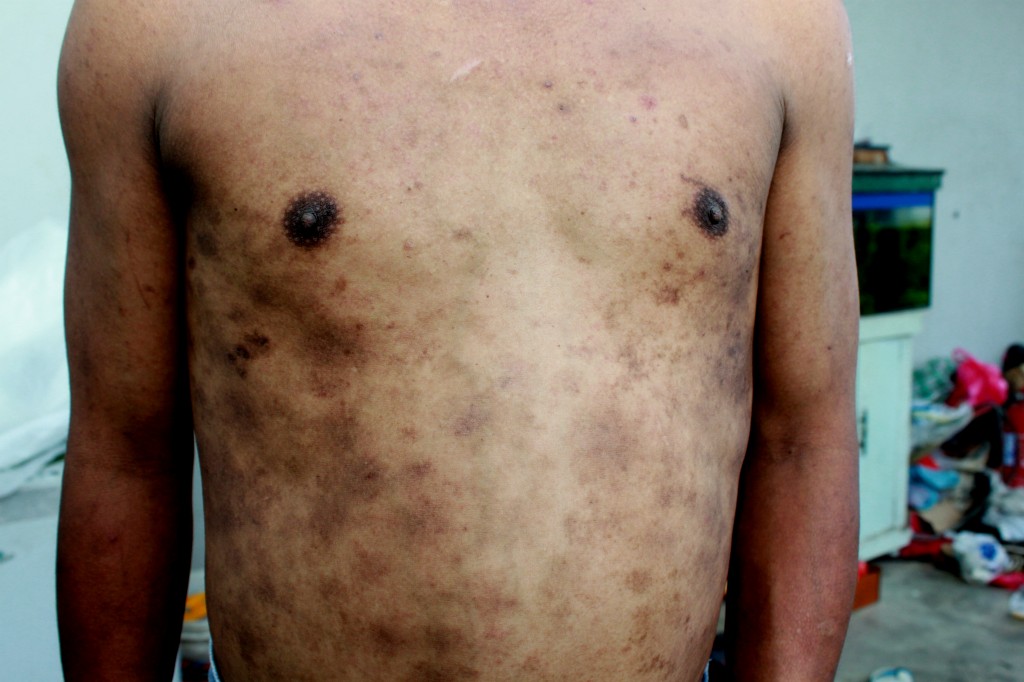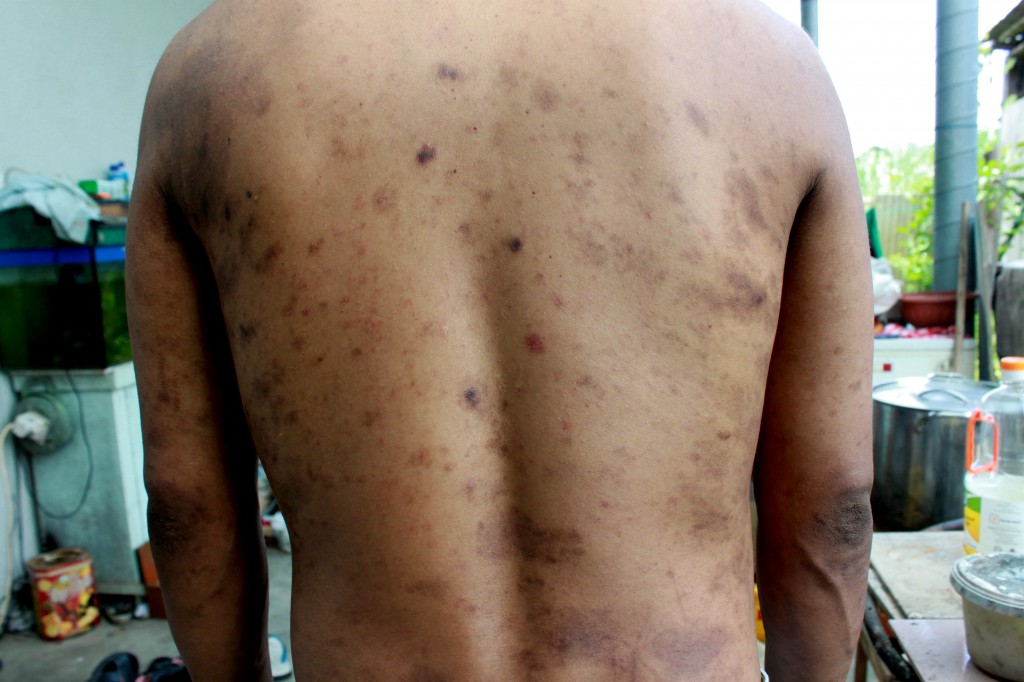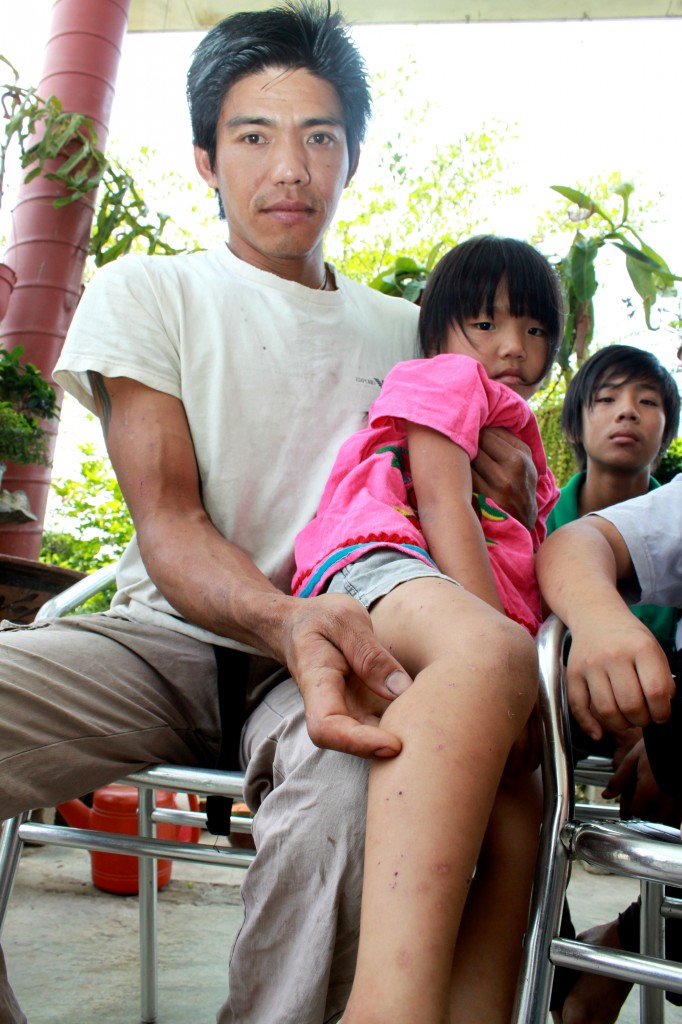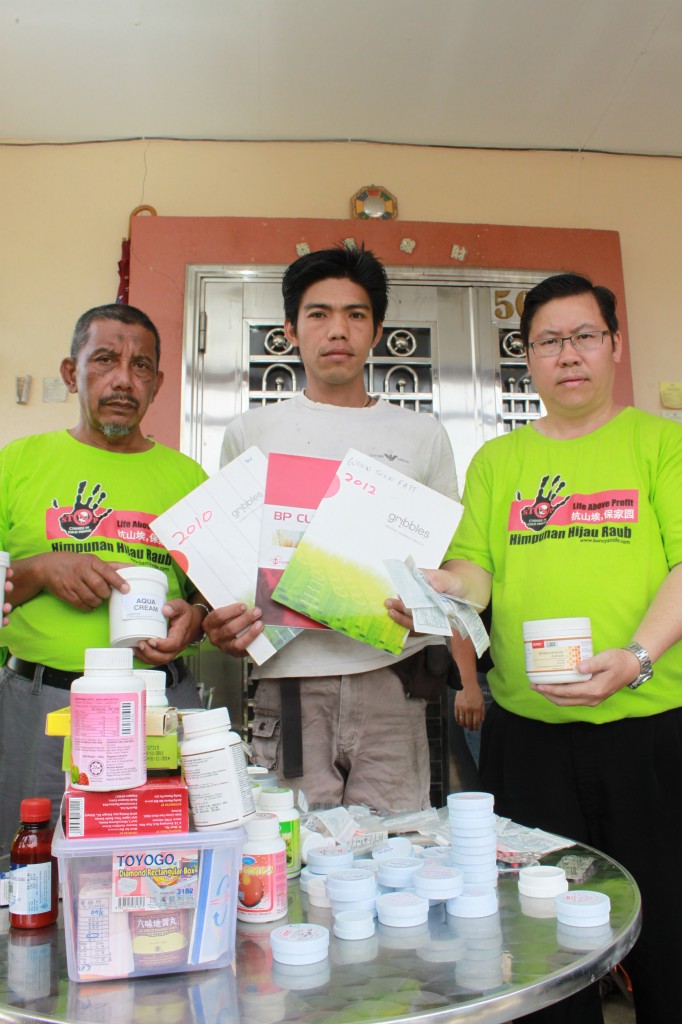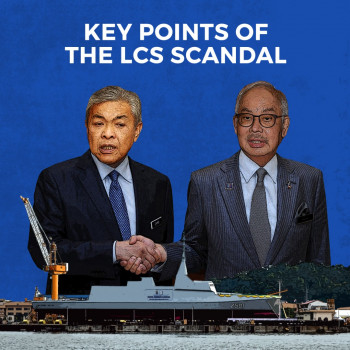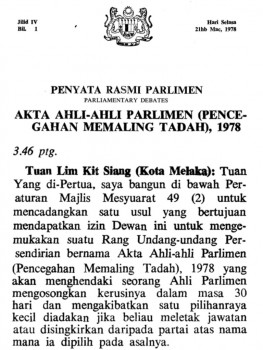In a case when pieces of metal supersedes that of lives, hundreds in Bukit Koman have suffered due to political and cronies’ avarice. A run through of what happened in Bukit Koman and how the people are suffering due to cyanide poisoning from gold mining shows how cruel and heartless the powers-to-be can be when it comes to the people’s plight. By T.K Tan.
Bukit Koman (BK) is a small and old village located inside Raub district in Pahang, consisting of approximately 400 hundred families with around 3,000 residents, who are mostly engaged in farming. It is situated right in the middle of the gold mining area.
The tranquillity of this idyllic village was interrupted in 2006 when it was found that sodium cyanide, a poisonous chemical, was to be used in the gold mine adjacent to the village.
The villagers began to form the ‘Objection of cyanide use in gold mining in Bukit Koman’ action committee to protest against the gold mine operator Raub Australian Gold Mining Sdn Bhd. (RAGM) for using cyanide in its operations in BK.
The mine was officiated with much fanfare by the Pahang state government and MCA’s Raub MP in 2007. Protest and petition to the federal government and MCA by BK residents to stop RAGM from using cyanide ensued.
78 percent have ailments
As RAGM began using cyanide in the mine in March 2009, the residents began to encounter stinging smell, experience insomnia, vomiting, dizziness and other abnormal symptoms. The number of abnormal symptoms reported exceeded 200 cases. Villagers organised protests against RAGM in March 2009. Some villagers began to migrate away from BK.
A survey done by BK residents revealed that 78.1 percent of the residents in surrounding areas were suffering health problems, believed to be related to cyanide used in the mine.
Topping the list was skin itchiness and rashes (50.1 percent), followed by eyesores/itchiness/dimness (43.9 percent), dizziness/headache (35 percent), fatigue (34.5 percent) and cough (33.4 percent). The survey was carried out by the BK action committee against the use of cyanide in gold mining on May 19 and 20.
The group interviewed 383 residents house by house in BK and surrounding areas within a 1km radius. The figures were higher among BK New Village residents, where 84.8 percent of the villagers said they have suffered at least one health problem, while 57.2 percent said their health conditions worsened after 2009. (Malaysiakini, 21 June 2012)
In May 2012, the Pahang state government reported that water sample in an area owned by RAGM in BK is free from cyanide and that the air quality cyanide chemical reading was also under control (BERNAMA 17 May 2012).
Why is cyanide poisonous
Cyanide is a white, hygroscopic crystalline powder that is odourless when dry. It bonds well with gold, silver and other metals. The substance decomposes slowly in water or moisture.
One teaspoon of a 2% solution can kill a person. It is highly toxic, rapidly acting, potentially deadly chemical that can be absorbed into the body by inhalation, through the skin and by ingestion. It is the killing agent used in gas chambers and mercy killing for ease of speed.
Total cyanide composition on surface water must be no more than 0.2mg/L. If it exceeds 0.5mg/L, 20% of the fish will be dead in two hours, all fish will be dead in 24 hours.
According to a reply to Friend to Earth Malaysia by Pahang Mineral and Geoscience Department (PMGD), RAGM can use concentration of 350mg/L Cyanide solution to extract gold from the ore. Gold will be reclaimed via electrolysis. The solution in the vats will be recycled. Only purified water will be discharged to abandoned pond left over from previous mining activity.
PMGD also said “once discharged to the abandoned pond, the pond water will contain approximately 0.008% of Cyanide. In the presence of sunlight, the cyanide percentage in the water will be less and less and become totally degraded. The water of the abandon pond will be recycled for subsequent extraction process. Cyanide extraction has been widely use in mining industry, including developed country.” (www.bancyanide.com , 4 June 2009).
Villagers lose court case
On March 21, 2008, BK residents led by Wong Kim Hong, Chong Sow Pin, Hue Fui How, and Mustapha Hussin filed their judicial review application at the KL High Court on behalf of the residents, where they named the Department of Environment (DOE) and RAGM as the respondents.
The suit seeks several declarations:
- The Environmental Impact Assessment (EIA) report submitted by RAGM to the DOE in 1996 did not comply with certain requirements of the Environment Quality Act;
- Seeking a certiorari order (to quash) the DOE’s approval of the preliminary EIA report;
- Detailed Environmental Impact Assessment (DEIA) to be ordered on the company;
- Developers must obtain a DEIA before proceeding with gold-mining works; and,
- RAGM to cease its operations until a DEIA is made.
The KL High Court on June 2009 ruled that the residents had filed their application out of time. The Court of Appeal upheld the KL High Court’s decision on August 2011. On 6 September 2012 the Federal Court dismissed the applicant’s suit and upheld the lower courts’ decision.
The residents’ counsel Malik Imtiaz said the court’s judgement implied that “despite having merits as we have produced, if you are out of time in filing the application then the application is dismissed.” (Malaysiakini, 6 September 2012)
Chronology of events
| August 2006 | RAGM obtained approval from PMGD to use cyanide in the BK mine. |
| December 2006 | BK villagers formed ‘Objection of cyanide use in gold mining in Bukit Koman’ committee’ (committee). Petition launched and 10,000 signatures collected. |
| March 2007 | Pahang MB Adnan Yaakob officiate opening of the RAGM |
| May 2007 | The committee submits letter to federal government (FG) with the 10,000 signatures. No respond was obtained. |
| March 2008 | Committee file law suit to revert PMGD’s approval to RAGM to use cyanide in the gold mining process in BK. |
| March 2009 | Pahang government published report saying no smell of cyanide detected in BK. Tras ADUN Choong Siew Onn reports matter to MACC |
| September 2012 | 15,000 turned up for Himpunan Hijau rally to protest against the cyanide usage in Raub. |
| September 2012 | Federal Court dismissed BK residents appeal to force RAGM to conduct a Detailed Environmental Impact Assessment (DEIA). |

